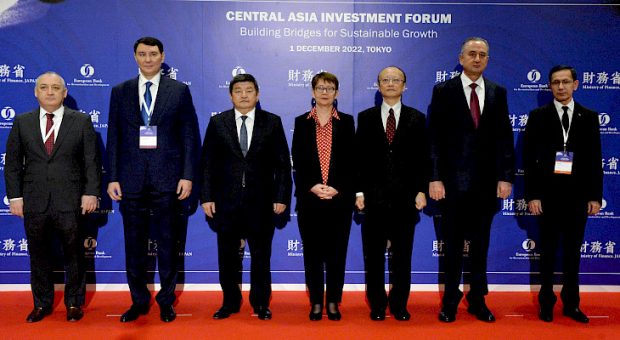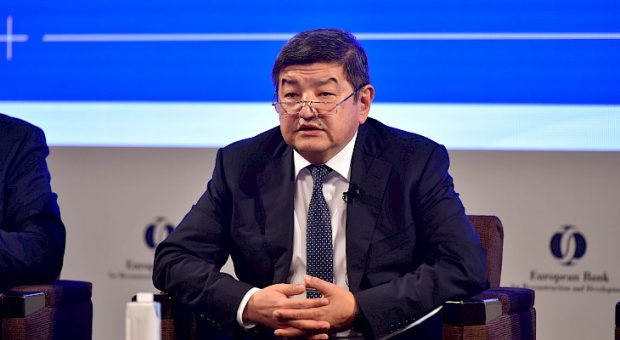
World’s geopolitics shift towards Central Asia, seeking deeper engagement, greater lucrative connectivity

By Habib Toumi
MANAMA: This growing status, strengthened by grave security considerations, has been attracting several major and other state actors seeking to build political, business, energy and cultural foundations and joint initiatives conducive to close cooperation and robust partnerships.
For non-regional actors, mainly European countries, the growing interest in Central Asia also seeks to limit the influence of Russia and China and erode their status of the region’s preferred security partners.
The Central Asia countries are naturally aware of the inexorable geopolitical and security shifts and their growing importance on the world map, and are looking at the future with a high level of pragmatism, confidence and anticipation.
Four of the five countries of Central Asia Kazakhstan, Kyrgyzstan, Tajikistan and Uzbekistan are founding members of the Shanghai Cooperation Organization (SCO), the Eurasian political, economic and security organization formed in 1996. Turkmenistan is the fifth Central Asian country.
Today, made up of eight members (China, India, Kazakhstan, Kyrgyzstan, Pakistan, Russia, Tajikistan and Uzbekistan), observer states and dialogue partner states, the CSO is the world’s largest regional organization in terms of geographic scope and population, covering approximately 60% of the area of Eurasia, 40% of the world population, and more than 30% of global GDP.
The Central Asia countries feel that their special status is gaining a global dimension with the focus of the world on their potential and capabilities as partners at various levels.
Drawing a picture of the potential that Central Asia holds for the world, Kyrgyzstan’s Chairman of the Cabinet of Ministers Akylbek Zhaparov said that the region’s role in the global market is expanding well into the future.
“Today we are witnessing a period of crisis after crisis, when the development of the Sustainable Development Goals, the green economy and integration processes are under threat,” he told the Central Asian Investment Forum held in Tokyo.
“Our world, our country is on the threshold of global transformations. Changes in the equilibrium of the world economy have led to a shift in its center of gravity from the West,” he said, quoted by Kabar News Agency.
Zhaparov noted that Asia has become the world’s economic leader in terms of nominal GDP at purchasing power parity.
“The geography of Asia’s trade turnover began to far exceed the foreign trade presence of the United States. The region is dynamically developing and has significant human and natural resources. More than 60% of the world’s population lives in Asia. 21 of the 30 largest cities in the world are located on this continent.”
Two weeks ago, the world’s population reached 8 billion people. According to the UN, this figure was achieved thanks to the growth dynamics of the Asian region, he added.

“Against this general background, the strategic role and importance of Central Asia is growing. Today Central Asia ceases to be a periphery in the global market. The combined gross domestic product of the Central Asian countries is $347 billion. Its role in the regional and world economy has increased significantly. Over the past 20 years, the GDP of the Central Asian countries has increased by 7.5 times, and the average growth rate was 6.2%. This is higher than the indicators of developing countries.”
In comparison with the world economy as a whole, growth is more than twice higher, Zhaparov said.
“I believe that the role of Central Asia in the global market will only increase: trade routes and supply chains of goods are moving to our region. Already today, land and rail routes through Central Asia are becoming more attractive, and the delivery of goods to the West is becoming cheaper and faster,” he said.
“Under these conditions, new opportunities open up for the countries of Central Asia, in particular for the Kyrgyz Republic. In order to gain a new round of development, it is necessary to carry out infrastructural integration. For countries like ours, which do not have access to the sea, it is necessary to develop road and rail infrastructure. We need new rail routes that will connect us with other countries and allow us to integrate our economy into the global supply chain.”
The construction of the China-Kyrgyzstan-Uzbekistan railway will begin in the near future, at a cost estimated at $6 billion, he said.
Climate change, a growing population and the planet’s economy are redefining the issue of clean and sustainable energy, Zhaparov said.
“In this regard, the Central Asian region has enormous potential as a source of renewable energy. We are currently using about 10% of the available hydropower potential. Given this, the prospects for the development of hydropower in the Kyrgyz Republic and in the region as a whole are very significant.”


